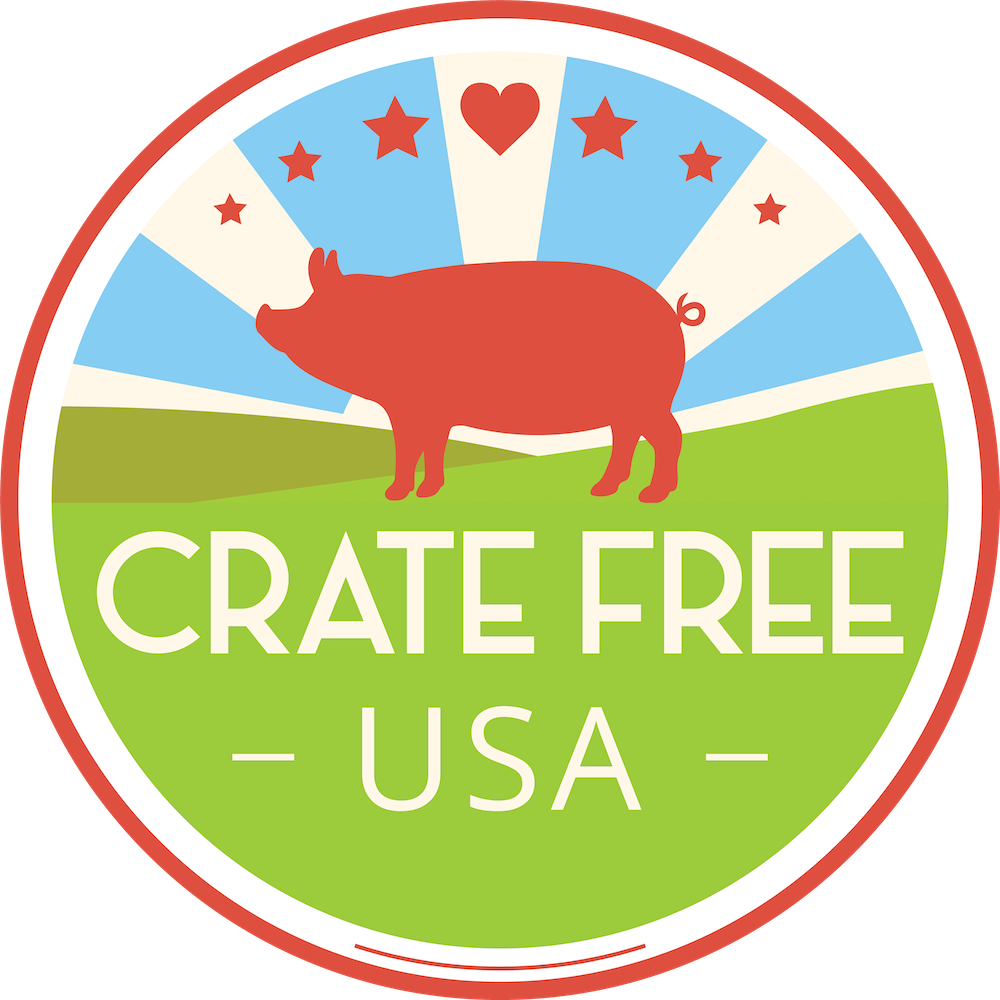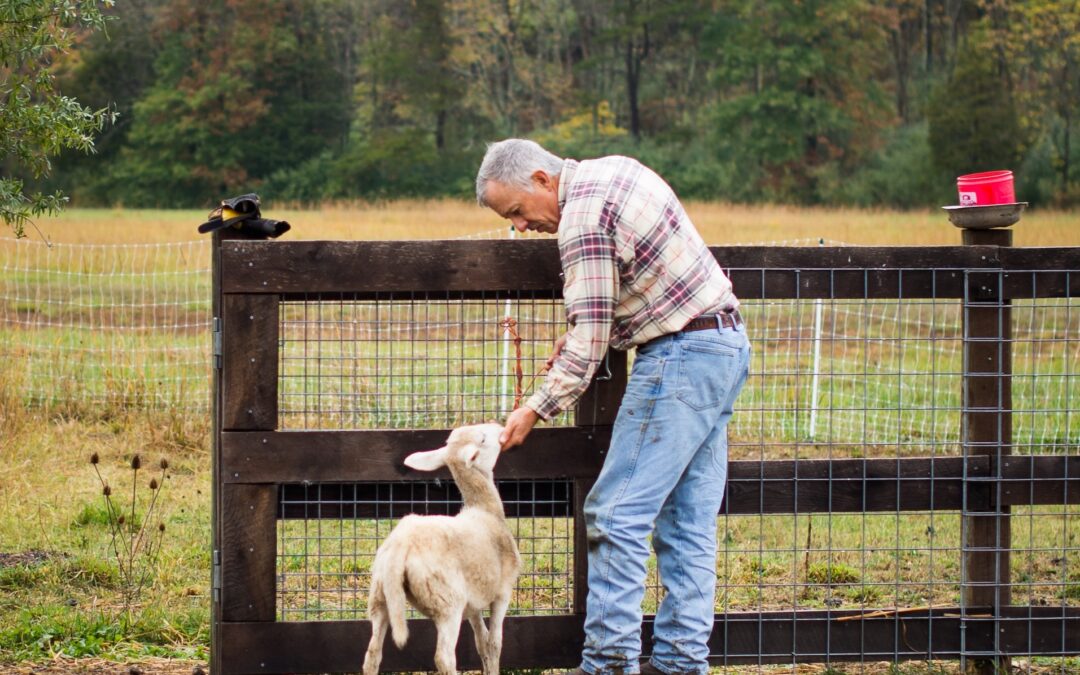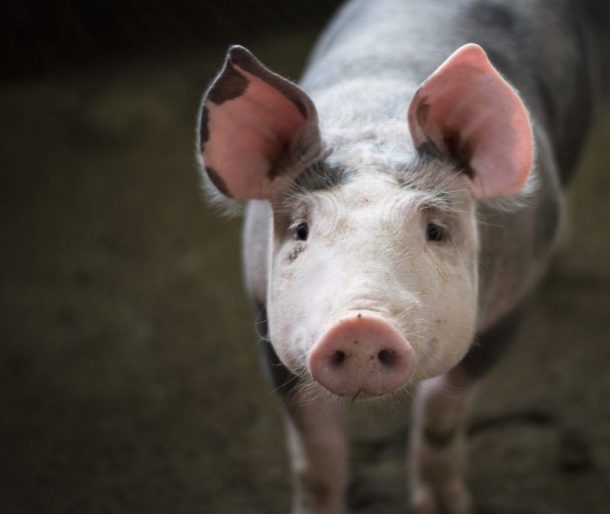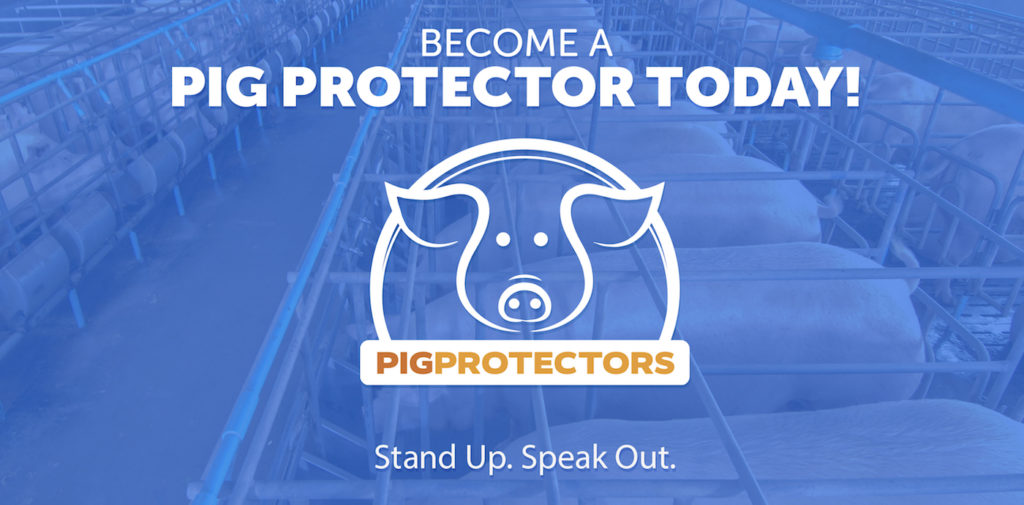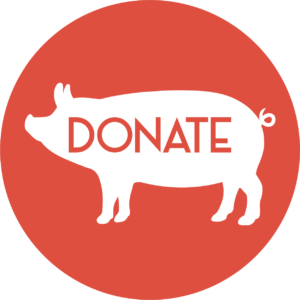Imagine this: you are attending elementary school during the 1990’s or early 2000’s. In the lunchroom and gymnasium, “Got Milk?” posters hang proudly with your favorite athletes and celebrities sporting a most fashionable milk mustache. With your meal ticket, you pick up a cold carton of coveted chocolate milk, unless they already ran out by the time it’s your table’s turn to get in line. Every week, Wednesdays are called “Hot Dog Day”, and pizza is served daily, just in case you don’t like the daily special, even though today they are serving your favorite barbecue rib sandwich. When you get home from school, you have chicken nuggets for dinner and ice cream as a treat before bed, concluding the day without any reflection or awareness of where the animals on your plate were raised and how they were treated.
Unfortunately, American youth today still don’t give much thought to the lives of farmed animals. A study from 2021 demonstrated an astonishing unfamiliarity with the origins of common foods.
-
-
- 44% of children claimed that cheese came from a plant
- 41% of children claimed that bacon came from a plant
- 40% of children claimed that hot dogs came from a plant
-
Thus, if children are unable to properly identify animal-based meals, then they have no reason to reflect on the lives of farmed animals.
At Crate Free USA, we acknowledge that discussing the treatment of animals on factory farms with your children can be uncomfortable. However, we also believe in the importance of food transparency and encouraging a generation of informed, compassionate consumers. Handing our youth books and toys with happy depictions of farm animals not only misrepresents how the majority of them are treated in our industrial agricultural system, but it also seriously hampers our efforts to encourage more mindful food purchasing decisions and slows down progress to improve animal welfare standards.
From birth, we sing songs to our children like “Old MacDonald” and teach them farm animal noises that eventually become some of their first words, yet what most of us fail to do as they grow older is inform them that these representations do not accurately portray how most farm animals are raised.
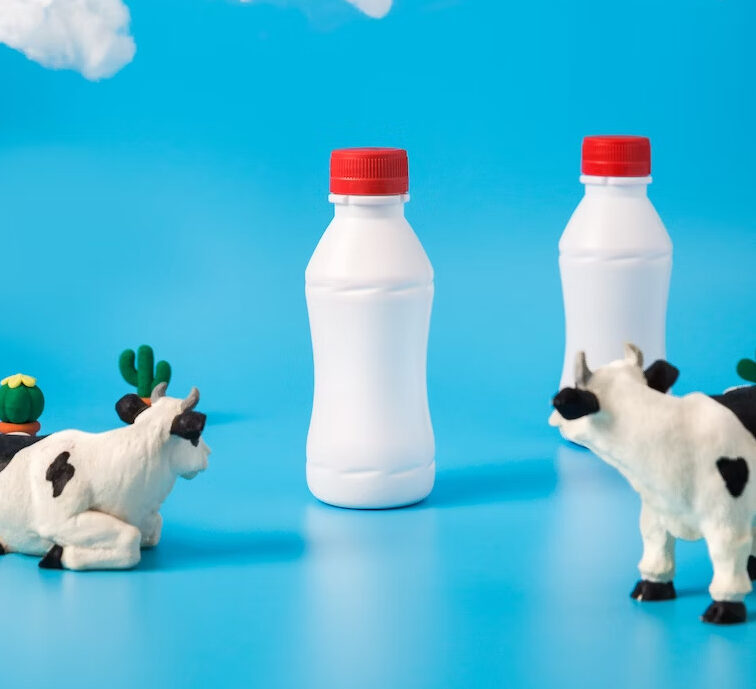
Children’s books and toys falsely represent the lives of most farmed animals
Credit: Mae Mu/Unsplash
Crate Free USA is determined to establish accurate perceptions of animal agriculture in the next generation in order to combat factory farming through humane education. We are introducing a series of kid-friendly humane education presentations around the Chicago area to bridge the connection between farm animals and the food on our plates.
THE PLAN
Our project will consist of 45-minute presentations led by Crate Free USA team members with a focus on animals, farming, nature, compassion, and well-being. A carefully crafted slide deck, entitled “All About the Animals Who Feed Us”, will display age-appropriate and captivating graphics illustrated by artist Justin Rose.
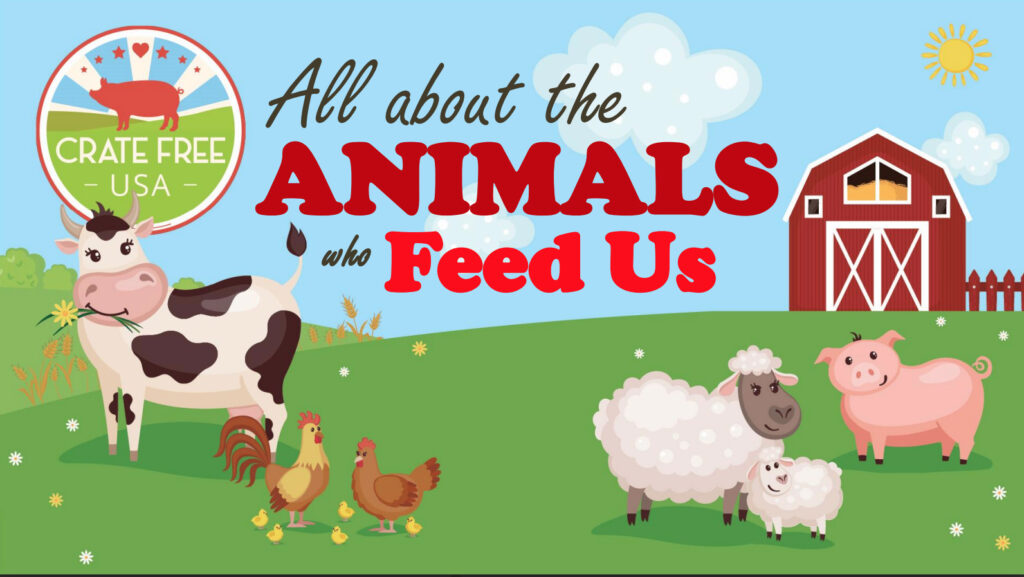
Graphics illustrated by artist Justin Rose
We have held sessions in Chicago, Elgin, Hampshire, and Geneva with more to come. Our intended age group is 9- to 11-years-old, and educational settings include libraries, elementary and middle schools.
Interested in having us come to your school or library? Please go to our Humane Education page for more info!
Children have an innate love for animals and our goal is to extend their compassion to the animals who feed us. We want to gently inform and educate (not indoctrinate) on how these animals are raised, foster kindness for all living beings, and encourage critical thinking skills when it comes to food choices. The presentation includes the following:
-
-
- Discussions about the living conditions of farmed animals in large-scale operations as compared to pasture-based family farms
- Thoughtful looks into the lives of pigs, chickens, and cows
- Actions we can take that empower us to better the lives of farm animals (i.e. buying from local farmers, looking for specific package labels, reducing meat intake, etc.)
-
The Institute for Humane Education describes this type of work as “a field of study and an approach to teaching that draws connections between human rights, animal protection, and environmental sustainability.“ Our program also aligns with their four elements of humane education:
-
-
- Acquire Knowledge
- Think Deeply
- Make Compassionate and Responsible Choices
- Focus on Solutions
-
With these principles, we can provide children with the necessary information and skills to become more ethical consumers while respecting their individual autonomy and home environments.
THE IMPORTANCE OF HUMANE EDUCATION
CREATING A KINDER GENERATION
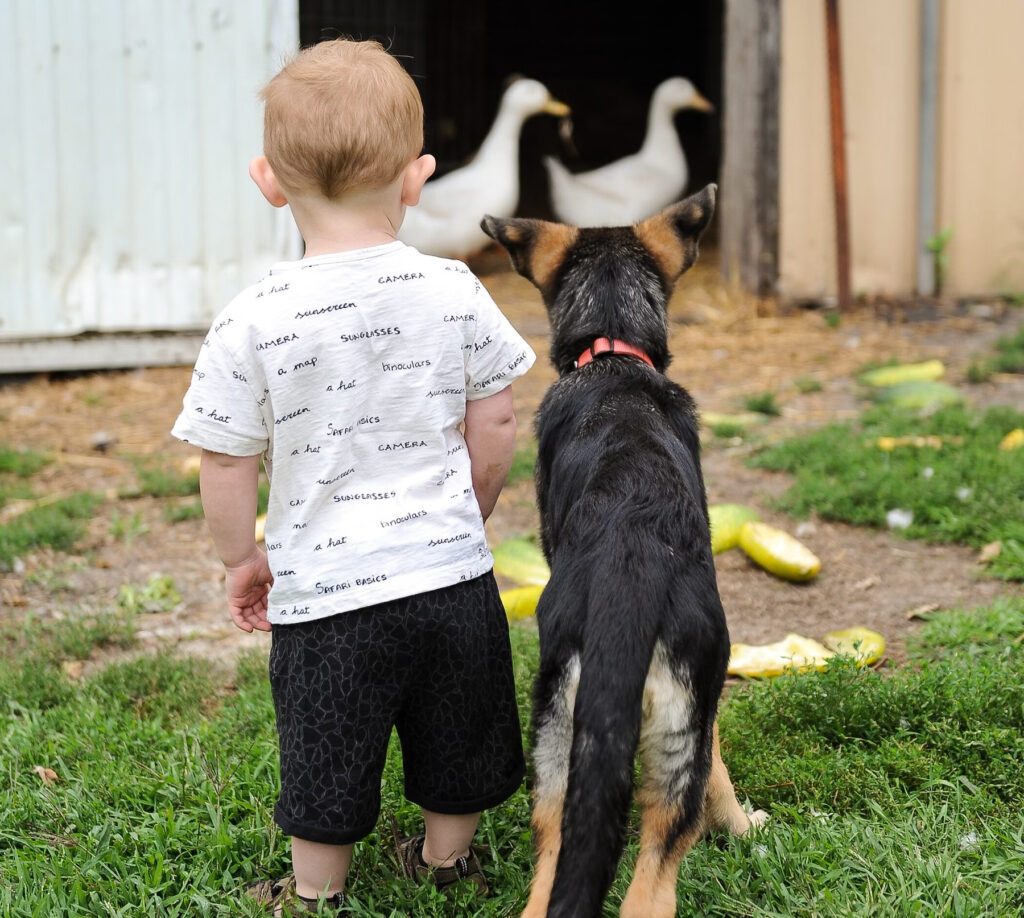
Compassion toward animals cultivates empathy for others
Credit: Holly Landkammer/Unsplash
Because 99% of all US farmed animals are raised on factory farms, many of us wonder why there isn’t enough outcry to rethink and reform these operations. The biggest challenge animal advocates face is simply that not enough people know about these issues.
According to a 2022 ASCPA survey, only 2 out of 10 adults accurately identified that the majority of food animals are raised on large-scale farms, with 80% of respondents overestimating the proportion raised on pastures. Unfortunately, we animal welfare advocates often live in our own ecosystem and think that more people care than actually do.
But even with the efforts of so many animal welfare groups working to raise public awareness – releasing documentaries like “At the Fork” (2016), “Right to Harm” (2019), and “The Smell of Money” (2022) – we still face one incredibly pervasive issue… anthropocentrism. A term many of us have never heard, but an idea embraced by our capitalistic western society, anthropocentrism is the “philosophical viewpoint arguing that human beings are the central or most significant entities in the world”, and it “regards humans as separate from and superior to nature and holds that human life has intrinsic value while other entities (including animals, plants, mineral resources, and so on) are resources that may justifiably be exploited for the benefit of humankind” (Britannica). Factory farms are evidence of this harmful ideology, which prohibits viewing animals as moral subjects and allows us to remove ethical constraints. On these large-scale operations, they are merely commodities undeserving of consideration and respect.
Albeit this empathy and concern for other living things is crucial for the well-being of individuals, communities, and our natural environment. Not only does it benefit the lives of animals, but high levels of compassion and emotional intelligence are related to the following: improved well-being and mental health, greater academic and professional outcomes, efficient social skills and stronger social networks, and less aggressive behavior.
Research also supports the idea that an individual who is empathetic toward animals is likely to extend those feelings toward people. Inversely, cruelty against animals is often linked to domestic violence, child maltreatment, and elder abuse. Thus, in addition to teaching compassion towards all animals, structured humane education is another key factor for creating a kinder generation.
CHALLENGING OLD BELIEF SYSTEMS TO HARBOR CHANGE
Let’s shift our attention back to the opening anecdote. Big dairy and meat industries have an incredibly long history of indoctrination through multi-million dollar marketing schemes and youth-oriented programs. According to the Oxford Dictionary, “indoctrinate” means “[to] teach (a person or group) to accept a set of beliefs uncritically”. The Cambridge Dictionary defines it as: “to often repeat an idea or belief to someone until they accept it without criticism or question“. Thus, the common denominator we can agree upon is that indoctrination is the teaching of a belief system without encouraging critical thinking, independent reflection, and consequence analysis.
“Big ag” often uses indoctrination as a strategy to encourage the consumption of animal products. For nearly 100 years, industrial farms have benefited from a campaign known as checkoff programs. In simple terms, farmers are taxed on the production of their goods. With these funds — almost $900 million per year — the government pays mega marketing companies to promote their products.
The big dairy industry especially benefits from these programs, and the “Got Milk?” campaign is the most notorious. Milk sales have been declining for decades, and in the early 90’s, the largest milk processors in California voted to designate three cents of every gallon they sold to a marketing project in order to boost consumption. This resulted in an astounding $23 million marketing budget per year, and its impact was substantial. Only a year after its initial launch, California’s milk sales increased in 1994 for the first time in over a decade. With the use of brilliant slogans and celebrities, this type of advertising had created an emotional connection with a once-ordinary product in the hearts of millions of Americans.
The issue with these government campaigns is that they promote the consumption of animal products without disclosing the truth about how the majority of food animals are raised. They appeal to the emotions of both children and adults, fostering a society that mindlessly consumes.
The “Got Milk?” campaign is problematic, because small farms are essential for maintaining healthy and more humane agricultural practices, but without proper education, consumers do not have the capacity to make ethical choices and therefore purchase products that originate from factory farms. Dairy operations have been growing massively in size, raising concerns for animal welfare and environmental pollution. In 1992, only 500 farms managed at least 1,000 cows, while in 2017, that number grew to nearly 2,000 – milking nearly half of all US cows. Additionally, the Environmental Protection Agency does not regulate air pollution for mega farms, although the largest emitter of ammonia in the United States is a large-scale dairy farm in Oregon.
You see, indoctrination is the very reason why farm animal welfare organizations have to fight for seemingly agreeable causes. If it weren’t for the ag industry’s pervasive efforts to influence our purchasing decisions, most consumers wouldn’t unknowingly support the animal cruelty and environmental havoc that occurs on factory farms.
Even more disturbingly, if we are made aware of the suffering that animals in this industry face, many consumers still justify their actions to purchase factory-farmed products by succumbing to the bandwagon fallacy or employing mental tactics like avoidance and dissociation.
BE A PART OF THE SOLUTION
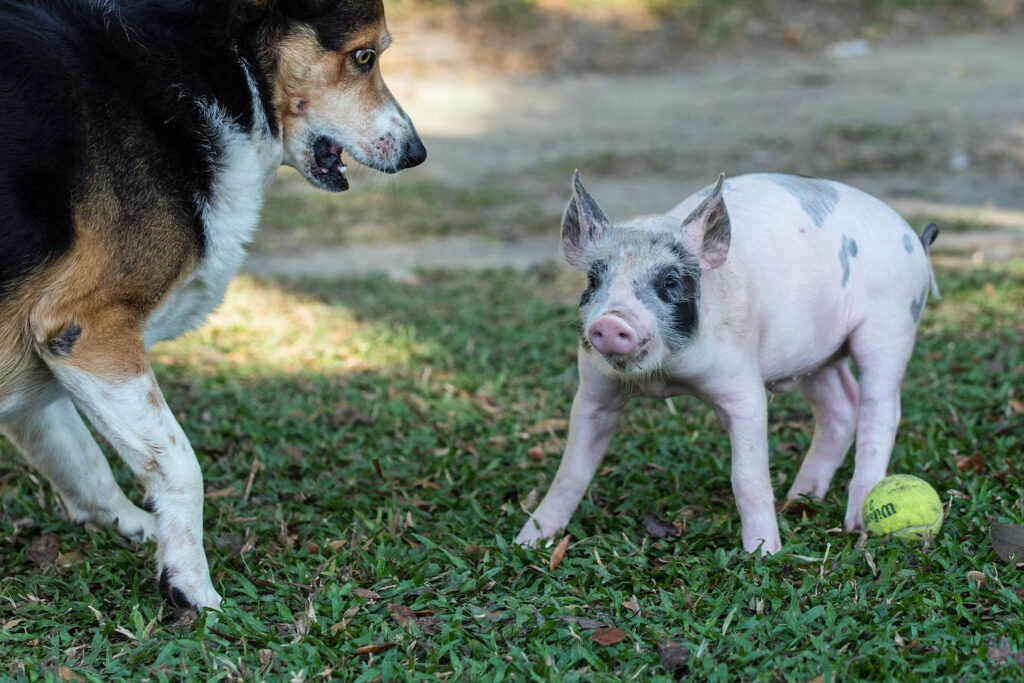
Both pets AND farm animals are deserving of moral considerations
Credit: David Clode/Unsplash
Crate Free USA recognizes the importance of early humane education to help implement empathetic and healthy decision-making skills in order to create a kinder world. We all have a responsibility to educate our youth and we hope that you encourage compassion to animals and critical thinking skills to the children in your lives.
We also recommend regularly exposing your family to animals, such as adopting a pet, visiting nature centers, volunteering at local shelters, and touring local, regenerative farms. Research supports the idea that individuals are more likely to treat animals with sensitivity and concern if they encounter them often.
However, the most important job we have is to remind our families that dogs and cats are not the only animals worthy of humane treatment and respect.
If you are an educator or program leader interested in having Crate Free USA lead a humane education session at your school, library, camp, or beyond, please email us at info@CrateFreeUSA.org.
• • •
Emma Balinski is a dedicated animal welfare advocate with strong interests in philosophy and neuroscience. She actively fosters through her local animal shelter, enjoys nature, and figure skates in her free time.
